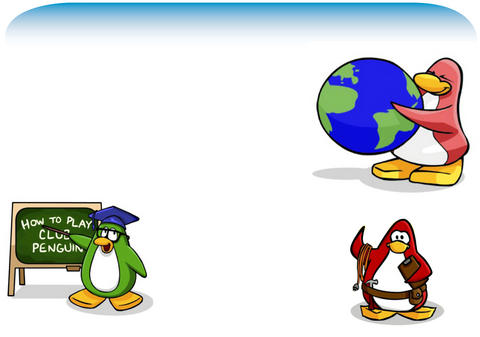Forget Second Life. The real virtual world gold rush centers on the grammar-school set.
Trying to duplicate the success of blockbuster Web sites like Club Penguin and Webkinz, children's entertainment companies are greatly accelerating efforts to build virtual worlds for children. Media conglomerates in particular think these sites - part online role-playing game and part social scene - can deliver quick growth, help keep movie franchises alive and instill brand loyalty in a generation of new customers.
Second Life and other virtual worlds for grown-ups have enjoyed intense media attention in the last year but fallen far short of breathless expectations. The children's versions are proving much more popular, to the dismay of some parents and child advocacy groups. Now the likes of the Walt Disney Co, which owns Club Penguin, are working at warp speed to pump out sister sites.

PHOTO: NY TIMES NEWS SERVICE
"Get ready for total inundation," said Debra Aho Williamson, an analyst at the research firm eMarketer, who estimates that 20 million children will be members of a virtual world by 2011, up from 8.2 million today.
Worlds like Webkinz, where children care for stuffed animals that come to life, have become some of the Web's fastest-growing businesses. More than 6 million unique visitors logged on to Webkinz in November 2007, up 342 percent from November 2006, according to comScore Media Metrix, a research firm.
Club Penguin, where members pay US$5.95 a month to dress and groom penguin characters and play games with them, attracts seven times more traffic than Second Life. In one sign of the times, Electric Sheep, a software developer that helps companies market their brands in virtual worlds like Second Life and There.com, last week laid off 22 people, about a third of its staff.
By contrast, Disney last month introduced a Pirates of the Caribbean world aimed at children 10 and older, and it has worlds on the way for Cars and Tinker Bell, among others. Nickelodeon, already home to Neopets, is spending US$100 million to develop a string of worlds. Coming soon from Warner Bros Entertainment, part of Time Warner: a cluster of worlds based on its Looney Tunes, Hanna-Barbera and DC comics properties.
Add to the mix similar offerings from toy manufacturers like Lego and Mattel. Upstart technology companies, particularly from outside the US, are also elbowing for market share. Mind Candy, a UK company that last month introduced a world called Moshi Monsters, and Stardoll, a site from Sweden, sign up thousands of members in the US each day.
"There is a massive opportunity here," said Steve Wadsworth, president of the Walt Disney Internet Group, in an interview last week.
Behind the virtual world gravy train are fraying traditional business models. As growth engines like television syndication and movie DVD sales sputter or plateau - and the Internet disrupts entertainment distribution in general - Disney, Warner Bros and Viacom see online games and social networking as a way to keep profits growing.
But more is at stake than cultivating new revenue streams. For nearly 50 years, since the start of Saturday morning cartoons, the television set has served as the front door to the children's entertainment business. A child encounters Mickey Mouse on the Disney Channel or Buzz Lightyear on a DVD and before long seeks out related merchandise and yearns to visit Walt Disney World.
Now the proliferation of broadband Internet access is forcing players to rethink the ways they reach young people. "Kids are starting to go to the Internet first," Wadsworth said.
Disney's biggest online world is Club Penguin, which it bought in August from three Canadians in a deal worth US$700 million. At the time, more than 700,000 members paid fees of US$5.95 a month, delivering annual revenue of almost US$50 million.
Still, one world, even a very successful one, does not alter the financial landscape at a US$35.5 billion company like Disney. So Disney is pursuing a portfolio approach, investing US$5 million to US$10 million per world to develop a string of as many as 10 virtual properties, people familiar with Disney's plans said.
Tinker Bell's world, called Pixie Hollow, illustrates the company's game plan. Disney is developing the site internally house - creative executives who help design new theme park attractions are working on it - and will introduce it this coming summer to help build buzz for Tinker Bell, a big-budget feature film set for a fall 2008 release.
Visitors to a rudimentary version of Pixie Hollow, reachable through Disney.com, have already created 4 million fairy avatars, or online alter egos, according to Disney. The site will ultimately allow users to play games ("help create the seasons") and interact with other "fairies." When avatars move across the screen, they leave a sparkling trail of pixie dust, a carefully designed part of the experience.
"We wanted to come up with a way to make flying around the site feel really good," said Paul Yanover, executive vice president and managing director of Disney Online.
Disney's goal is to develop a network of worlds that appeal to various age groups, much like the company's model. Preschool-age children might start with Pixie Hollow or Toon Town, another of Disney's worlds, grow into Club Penguin and the one for Cars and graduate to Pirates of the Caribbean and beyond, perhaps to fantasy football at ESPN.com.
"All the stars are aligning for virtual worlds to become a mass-market form of entertainment, especially for kids and families," Yanover said.
If virtual worlds for adults are about escaping from run-of-the-mill lives, sites for children tap into the desire to escape from the confines of reality as run by Mom and Dad. "I get to decide everything on Club Penguin," said Nathaniel Wartzman, age 9, of Los Angeles, who also has a membership to a world called RuneScape.
But shopping is a powerful draw, too; most sites let children accumulate virtual points or spend their allowance money to buy digital loot. "It's really fun to buy whatever you want inside the game," Nathaniel said in a telephone interview. For his penguin, "like for Christmas I bought a fireplace, a flat-screen TV and a Christmas tree," he said.
Online worlds, which typically have low overhead and fat profit margins once they are up and running, charge a monthly fee ranging from US$5 to US$15 and require the adoption of an avatar. Some sites are free and rely on advertising to make money; others are advertising and subscription hybrids. Webkinz relies on the sale of stuffed animals, which come with tags that unlock digital content.
The power of the virtual worlds business was demonstrated recently when Vivendi announced a plan to buy Activision, a publisher of video games for consoles like the Sony PlayStation 3. Vivendi owns World of Warcraft, a virtual world for adults with more than 9 million members and revenue of more than US$1 billion.
Still, the long-term appetite for the youth-oriented sites is unclear. Fads have always whipsawed the children's toy market, and Web sites are no different, analysts warn. Parents could grow tired of coughing up the fees, while intense competition threatens to undercut the novelty. There are now at least 10 virtual worlds that involve caring for virtual pets.
Privacy and safety are a growing concern, particularly as companies aim at younger children. Some virtual worlds are now meant to appeal to preschoolers, using pictures to control actions so that reading is not required.
And critics are sharpening their knives. "We cannot allow the media and marketing industries to construct a childhood that is all screens, all the time," said Susan Linn, a Boston psychologist and the director of the Campaign for a Commercial-Free Childhood, a nonprofit group that made noise this month when it complained of ads for movies on Webkinz.com.
Operators shrug off worries about fads and competition. "Are features like creating an avatar a long-term advantage for anyone? Probably not," said Paul Yanover, executive vice president and managing director of Disney Online. "The viability and sustainability of this business comes from the shifting behavior of kids and how they spend their leisure time."
As for privacy and safety, companies point to a grid of controls. For instance, Neopets restricts children under 13 from certain areas unless their parents give permission in a fax. Several Neopets employees patrol the site around the clock, and messaging features are limited to approved words and phrases.
"Parents know they can trust our brand to protect kids," said Steve Youngwood, executive vice president for digital media at Nickelodeon. "We see that as a competitive advantage."

During the Metal Ages, prior to the arrival of the Dutch and Chinese, a great shift took place in indigenous material culture. Glass and agate beads, introduced after 400BC, completely replaced Taiwanese nephrite (jade) as the ornamental materials of choice, anthropologist Liu Jiun-Yu (劉俊昱) of the University of Washington wrote in a 2023 article. He added of the island’s modern indigenous peoples: “They are the descendants of prehistoric Formosans but have no nephrite-using cultures.” Moderns squint at that dynamic era of trade and cultural change through the mutually supporting lenses of later settler-colonialism and imperial power, which treated the indigenous as

By 1971, heroin and opium use among US troops fighting in Vietnam had reached epidemic proportions, with 42 percent of American servicemen saying they’d tried opioids at least once and around 20 percent claiming some level of addiction, according to the US Department of Defense. Though heroin use by US troops has been little discussed in the context of Taiwan, these and other drugs — produced in part by rogue Chinese Nationalist Party (KMT) armies then in Thailand and Myanmar — also spread to US military bases on the island, where soldiers were often stoned or high. American military policeman

An attempt to promote friendship between Japan and countries in Africa has transformed into a xenophobic row about migration after inaccurate media reports suggested the scheme would lead to a “flood of immigrants.” The controversy erupted after the Japan International Cooperation Agency, or JICA, said this month it had designated four Japanese cities as “Africa hometowns” for partner countries in Africa: Mozambique, Nigeria, Ghana and Tanzania. The program, announced at the end of an international conference on African development in Yokohama, will involve personnel exchanges and events to foster closer ties between the four regional Japanese cities — Imabari, Kisarazu, Sanjo and

A town in Japan is to urge all residents to restrict their smartphone use to two hours a day in an attempt to tackle online addiction and sleep deprivation. Officials in Toyoake, Aichi prefecture, said the measure would target not only children but also adults, amid growing concern about the physical and psychological toll excessive smartphone use is taking on people of all ages. The move aims “to prevent excessive use of devices causing physical and mental health issues … including sleep problems,” the mayor, Masafumi Koki said recently. The Toyoake municipal assembly began debating the non-binding ordinance this week ahead of a